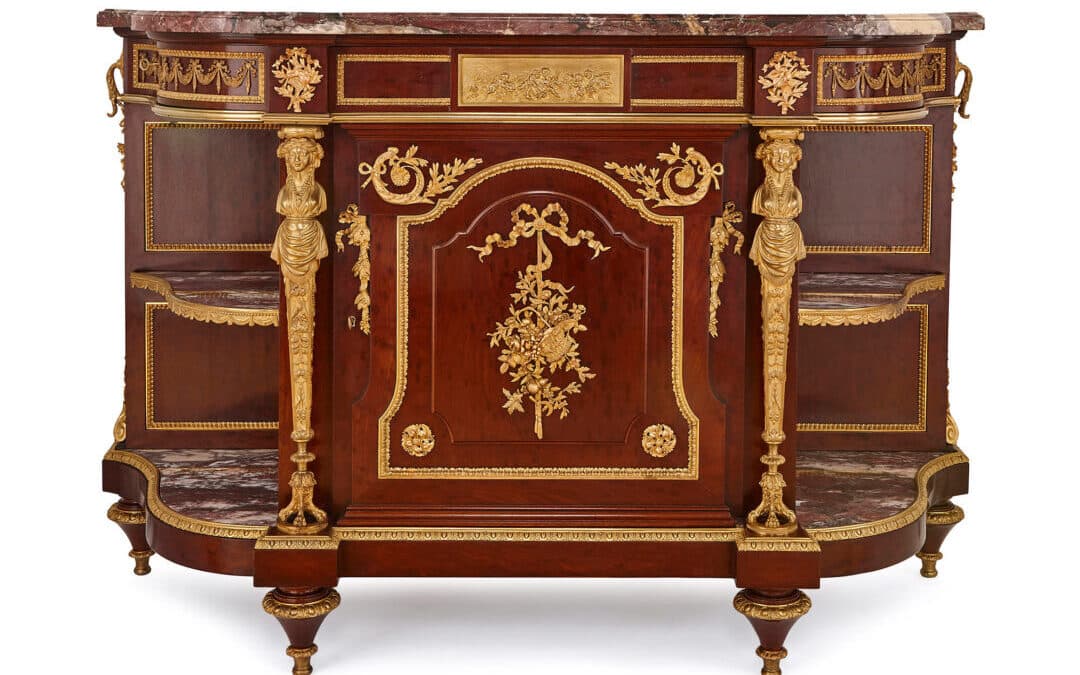Sifting through antique stores and flea markets is a popular hobby for good reason: Every square foot of space is filled with objects and furniture from different time periods.
However, if you’re on a mission to find valuable antique furniture, a large inventory of unappraised items can be equally exciting and overwhelming. This is especially true when you consider that many older but less valuable pieces were manufactured to look like authentic antiques.
Joshua Kodner Galleries has put together some expert tips to help you feel confident that the money you spend buying a piece will be worth the investment. Keep reading for good signs that you’ve found antique furniture between 100 and 150 years old.
Dovetail Joints
A telltale sign of authentic antique furniture is the way its individual pieces are fastened together. Dovetail joints were what craftsmen used long before the arrival of mass furniture production in order to secure individual pieces of furniture together. A dovetail joint is made with two interlocking pieces of wood that are very resistant to being pulled apart.
Antique chests will likely have dovetail joints you can easily find by inspecting the sides of the drawers. It should be noted, however, that furniture manufacturers still use this woodworking technique. If you find completely uniform dovetail joints, that piece of furniture was likely made by a machine. Handmade furniture that is at least 100 years old will have slightly irregular dovetail joints.
Mismatched Wood
Furniture that was handcrafted a long time ago will not be made of all the same wood. Craftsmen would not have used more expensive wood for parts of the furniture that would be hidden and tucked away from view. Check areas such as the sides of drawers and the underside of chairs to see if the wood there is different from the exterior wood. If the less visible parts of the furniture
appear to be of lesser quality, this is actually an excellent sign that you have something authentic on your hands.
Vintage Style
It’s always a good idea for antique furniture collectors to learn as much as they can about the dominant styles of the past. Some of the most important historical styles include William and Mary, Queen Anne, Chippendale, and Rococo. Familiarize yourself with each one so you can recognize an example when combing through flea markets. But keep in mind that plenty of manufacturers make reproductions of these styles. Don’t automatically assume that a piece in the style of William and Mary, for example, is actually from the early 1700’s.
Signs of Heavy Use
Wear and tear could be a great sign that you’ve found a genuine antique. However, just like with vintage style, you should remain skeptical. Many reproductions are manufactured to look worn down for that antique aesthetic. Furniture that is over 100 years old will show signs of heavy use in certain places, but not all over. The seat of a wooden chair will show its age, but the back and arms will likely look pretty pristine. There isn’t any reason for parts that aren’t routinely handled to look worn down.
There Is Asymmetry
While it’s true that modern manufacturers make reproductions with wear and tear, it’s hard to fake asymmetry. Even reproductions aren’t likely to have the irregularities or structural asymmetry that very old handmade furniture does. Often, wood furniture will show signs of shrinkage or splitting at the seams. Your find may be very valuable if it has minor irregularities but is in otherwise excellent condition.
If you’re looking for a reputable auction house to help you develop an antique furniture collection, there’s only one name you need to know in Dania Beach: Joshua Kodner Galleries. Everything in our gallery is appraised by Joshua Kodner, who specializes in unique art properties, gems, jewelry, and antiques. Call or contact us today if you’d like to learn more about our antique wooden furniture auctions.





